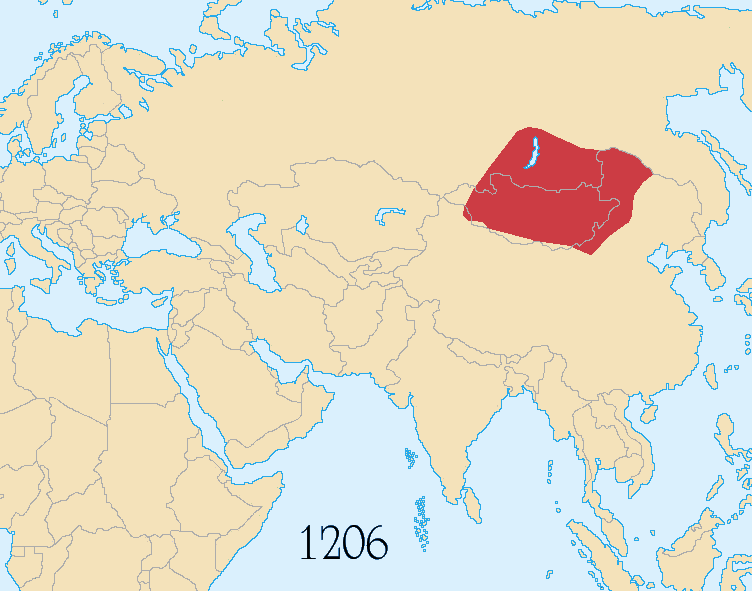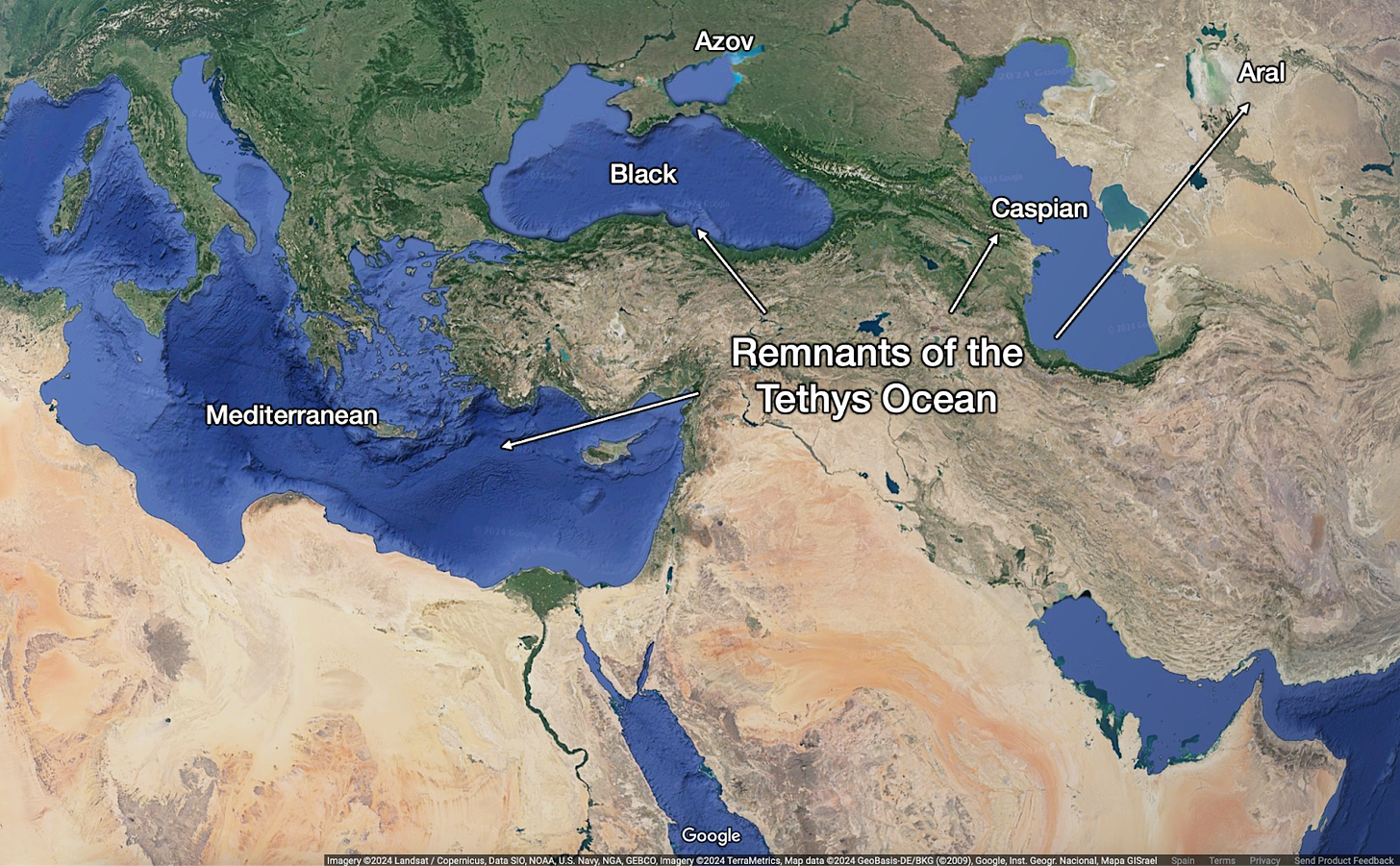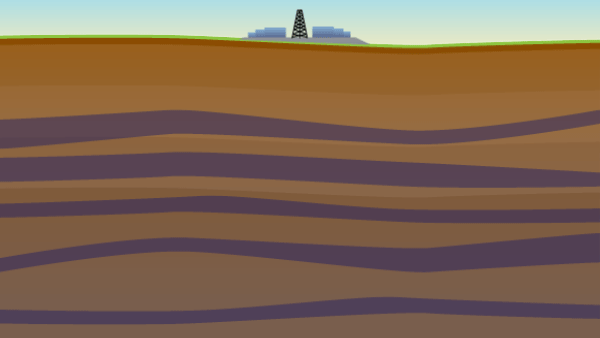The Ocean Death That Created Civilization
One event made all these things possible:
Roman civilization
Industrial Revolution
The oil wealth of Arab countries
Russia's invasions
The Mongol Empire
Globalization
Southern Europe richer than Northern Africa
What happened?
As far as I know, nobody has put together all the facts I’m about to share with you.
A Weird Corner of the Earth
What makes this part of the world special?
Here are a few aspects that make it unique:
1. Lots of Big Inland Seas
The Mediterranean, the Black Sea, the Azov Sea, the Caspian Sea, the (nearly disappeared) Aral Sea, the Red Sea, and the Persian Gulf are all in the same area, and they’re all either cut off from oceans or connected by very narrow passes.
If you look around at other continents, there’s nowhere else like it!1 There are very few other inland seas, forget about such huge ones. Why are all these seas concentrated here?
It matters, because the ramifications of these seas are huge.
We saw in this article how the Mediterranean was dry up to just 5M years ago, and that it flooded in a couple of months. If it hadn’t flooded, it would have been a hellhole, as I explored in the Seaflooding article. Summarizing these articles here:
The region occupied by the Mediterranean Sea is super hot. Just look at Northern Africa: The moment you move away from the Mediterranean and water doesn’t regulate temperature anymore.
Without water, this area would be even hotter because it’s 1,500 m deep on average. The deeper you go, the warmer it gets.
Imagine that without water to cool everything down!
Without a Mediterranean, you don’t get the Roman Empire. Without the Roman Empire, you don’t get Spain and Portugal and the Age of Discovery. You don’t get globalization, the development of Northern Europe and the Industrial Revolution.
But you also don’t get enough moisture for rains in present-day Turkey, and without that you don’t get the civilizations that emerged in the Fertile Crescent. No Sumerians, no Hittites, no Persians, no Babylonians, nothing. We would not have 24 hours in our day, or 60 minutes per hour. We would probably not have 12 months per year.
And it wasn’t just the Mediterranean. The Black Sea is a cradle of civilization, too, and has some of the oldest navigation in the region. It was one of the main seas of the Phoenicians and Greeks. Without it, you don’t get Byzantium / Constantinople / Istanbul.
Meanwhile, without the Red Sea, you don’t get rain in western Arabia, as I explain here. Without this rain, you don’t get cities like Mecca and Medina, and you don’t get Islam.

So why so many seas? Notice also that there are many depressions here—areas below sea level, including the Qattara Desert, and the incredible fact that the coasts of the Caspian Sea are way below sea level. Why?
2. The Biggest Flat Plains in the World
The Eurasian Plain is the largest plain in the world, as I explained in the article about Russia. Here’s the main map of the Eurasian Plain:
This is the highway that Mongols used to conquer everything from China to Hungary:

This is the same flat path as the one traversed by the Silk Road. No Eurasian Plain, no Silk Road, and no trade and civilizational exchanges, which were the main reasons why the most advanced civilizations appeared in Eurasia and nowhere else, as I explained in this article.
The fact that there are no impenetrable geographic barriers until you reach the Pacific Ocean is the reason why Russia expanded eastward for centuries.
That plain is why the USSR was able to reach Germany in WWII, why Eastern Europe was a Soviet Bloc, and why Russia invaded Ukraine: If Ukraine were to pivot to support NATO, Russia would be extremely exposed.
Speaking of southwestern Russia and Ukraine: All these flatlands didn’t have much forest, so they were ideal for grazing. It’s no coincidence that the domesticated horse appeared in this area, soon followed by the wheel and the wheeled cart.
As you know if you follow Uncharted Territories, the horse and the wheeled cart allowed much faster transportation overland, and speed of transportation is the crucial factor to drive trade (and hence wealth). So without horse and wheel, wealth, development, and civilization would have come much later, maybe somewhere else.
Poland’s location on the same plain explains why it disappeared for 125 years, eaten by Germany on the west and Russia on the east:
This is also why Poland fears a Russian invasion so much that 6% of its GDP goes to military spending. More details in the Poland article.
The plain reaches Germany, explaining why Germany has tried to become an ally of Russia, and is always wary of becoming an enemy.
So what formed such a huge flat region when the rest of the world is much more rugged?
3. It Contains Most of the World’s Oil & Gas Reserves
This is where we think there is oil and gas in the world today:
A lot of it appears to be in Russia and the Middle East. But just how much? Here’s a cartogram of known oil reserves in the world, so you can see orders of magnitude:
Outside of Venezuela, the vast majority of known oil reserves are in a few Middle Eastern countries. A tiny country like Kuwait has more oil reserves than the US! How come oil is so concentrated?
Meanwhile, Russia is the country with the world's largest natural gas reserves at about 38 trillion cubic meters, supplying about 1/5th of the world’s demand.

If you notice, the vast majority of reserves are in West Siberia and the Urals-Volga, which are the two big areas of the Eurasian Plain on Russian soil.
Why is all this oil and gas so concentrated around here?
Is this enough torment? Are you yearning for answers already? Are you dying to know?! OK, here’s the answer. All these factors—and more that we’re going to see—are because of this:
The Death of Tethys
Between 250 and 30 million years ago, the Earth had an ocean called Tethys. Then Africa, Arabia, and India moved north and crashed into Eurasia, closing the ocean.2
You can see here how Tethys was being fractured and closed off about 66M years ago:
43M years ago, India had crashed into Eurasia:
36M ago, we can recognize much of the world as it is today:
As we’ve seen in the past, the final closure of the Tethys Ocean came from India hitting against Eurasia, and that produced an ideal home for 50% of the world’s population, as we explored in this article.
The Tethys Ocean was there because of the Tethys Tectonic Plate: Oceanic plates are heavier than continental plates, so they sink further into the mantle. Water rushes in to occupy this lower land, forming an ocean. So what happened to that Tethys Tectonic Plate? It didn’t just get squeezed out into the Atlantic and Indian Oceans. It got sectioned and trapped by different tectonic plates of land!
Consider this: The average depth of the Atlantic and Indian Oceans is about 3,500 m (11,500 ft). The maximum depth of the Mediterranean is over 5,000 m, and about 2,200 m for the Black Sea. They are deep! Because they’re remnants of the Tethys Ocean tectonic plate—like the Caspian Sea, the Azov Sea, the Aral Sea, and the Persian Gulf.3
Notice how greenery follows the seas. Without the seas, we wouldn’t have gotten anywhere near as much moisture in this area, so no rain, and no plants. It would all be desertic dumpsterland. No civilizations could emerge.
But because of this water, civilization could emerge. Here’s one way to visualize this result: the location of Roman coins.

Rome was created and thrived thanks to the existence of these seas.
Let’s zoom in on this part of the world:
This area lies low. Do you recognize it? It’s the Fertile Crescent!4
It’s fertile because it was so low-lying that water from the mountains concentrated here, forming the Tigris and Euphrates rivers—Mesopotamia.5
But why are there mountains to its north and east? They were formed as the Tethys Ocean subsided below Eurasia.
As the Arabian Plate pushed north, it pressured the Tethys Plate to move north too, until it hit Eurasia and subsided below, creating the mountains you see above. Without Tethys, you don’t get these mountains, and you don’t get the rain that flows down and creates Mesopotamia.
If we move north of here, what do we see?
A sizable chunk of land around the Caspian Sea is below sea level! Here is what the lowest-lying areas look like today:
This is an ancient remnant of the Tethys Ocean!6 And why does this matter? This is the depression that made a pass south of the Ural Mountains, allowing for both the northern pass of the Silk Road and invasions from Asian steppe peoples.
But not all these regions were part of Tethys. To understand exactly which ones were, we must look at this area from a few million years ago:

What do you see that’s interesting? The whole area was under water, now called the Peri-Tethys. This was connected to the West Siberian basin, which was underwater too!7
Here’s just 10 million years later:
Here’s another view that helps you connect it to present-day geography:

What would become the Black Sea and Caspian Sea—and all the regions around them—were still underwater. As was the Fertile Crescent, between Zagros and Arabia. Even today, you can find fish fossils in the mountains of Iran.
This is an imaginary rendition of what the present-day world could look like if the Paratethys Megalake was still around:

As these areas closed up, they also dried up. The ground was lifted up as the continental shelves closed and sediments accumulated. Why does this matter? Because this is the origin of oil and gas.
All the regions that used to be shallow seas and are now land (the Caspian Depression, the Pannonian Basin, and especially West Siberia and the Fertile Crescent) went through similar geological processes.
First, shallow seas have nutrients and are full of energy from the Sun. This generates lots of fauna: phytoplankton, zooplankton, molluscs, fish… As they die, their organic matter accumulates at the bottom of the ocean.
When the seas dry up, salt and sediments accumulate, too, forming a hermetic lid that weighs down the dead carcasses and transforms them into oil and gas.
Repeat the process several times, and each time you get a new layer of oil and gas. Then, we extract them.
Of course, these reserves of oil and gas are what gave wealth to countries like Saudi Arabia, the UAE, Kuwait, Iran, and Russia.
Look at where they are:
Oil and gas reserves in two areas:
In the Caspian Sea, where Tethys was
In the border between the Arabian and Tethys plates, which was underwater for millions of years8
OK it’s time to put all this information together.
Takeaways
Here’s what happened:
The Tethys Ocean gets closed up by the African, Arabian, and Indian Plates hitting the Eurasian Plate
As it does, parts of the Tethys Plate get cut off and remains on the surface, creating seas. Others subduct below other plates—mainly Eurasia—creating mountains from Spain to the Himalayas
All these mountains capture moisture from the wind and create the rivers that birthed all the civilizations in this area
Notably, the formation of the Himalayas and Tibet is what produced the land that would accommodate 50% of the world’s population
Where the Tethys Plate doesn’t disappear, it gets trapped between continental plates, and leaves a set of inland seas behind
All these seas are necessary to create most of the civilization of Europe and the Middle East, including Greeks, Romans, Muslims, Persians, Sumerians, Babylonians, Phoenicians, and everything that followed them for two reasons:
They provide the moisture needed for rains in all this region
They allow for fast transportation
Without these civilizations, we don’t just get the Romans. We don’t get anything that follows them. No Age of Discovery or Industrial Revolution. No globalization
The shallowness of the ancient Tethys Ocean likely contributed to the pass between the Eurasian Plain and Central Asia, which was instrumental in the formation of the Silk Road and the exchange of trade and technologies across the supercontinent
This pass created huge network effects, and made Eurasia develop faster than any other world region
It also created a highway that allowed for peoples like the Mongols to create the biggest empire the world has ever seen
It’s also the reason why Russia needed to expand east (no buffer) and why it was able to do so all the way to the Pacific. Without it, Russia would unlikely be such an expansionist state. We might have other countries east of the Urals.
Russia’s location on the same plain as countries like Ukraine and Poland, as well as its expansionism, is the reason why it has occupied these regions in the past, and why it threatens them today (or attacks them)
But this would not have been possible without the oil and gas to finance it, and these come in part from the death of the Tethys Ocean, which left layers and layers of sea animals that eventually became oil and gas9
This is also the reason why Arabia has so much oil—specifically, the parts that used to be underwater. This is what has financed the region for a century, without which it would just be desert
As far as I know, nobody has ever put all these elements together, so you’re the first to hear it. Some of these claims are very strong (like the fact that the Mediterranean, Black, and Caspian Seas are remnants of Tethys), and some others are still a hypothesis (like the fact that the pass between the Caspian and the Urals is so low-lying because of Tethys, or the contribution of Tethys to the formation of hydrocarbons in Mesopotamia). As I get more information on the topic, I’ll update you. If you enjoyed it, consider subscribing. Later this week, I’m going to share other aspects of our lives that have been influenced by this momentous event, like why Europe is richer than North Africa, or what made the fortunes of Northern Europe.
Shhh Canada, your “inland seas” are “inland ices”. Call us back when you drift closer to the equator—or when humans make your land cozy, something we’re working hard at achieving.
Technically, it is believed that there was an initial movement up of the Cimmerian Plate, containing present-day Turkey, Iran, Afghanistan, Tibet, and all that part of central Asia. So really, there was an old version and a new version of the Tethys Ocean: The old was north of the Cimmerian Plate, the new one emerged south of it as Cimmeria moved up. Then the new was closed off by Africa, Arabia, and India. Honestly this doesn’t matter much for us, because the point is that parts of these oceans got stuck between land plates of what are today Africa, India, and Eurasia.
The Red Sea is likely not a remnant of the Tethys Sea, but the result of the fracture between Africa and Arabia.
The only part of the Fertile Crescent that has not been very affected by Arabia pushing Tethys into Eurasia is the Levant, close to the Mediterranean Coast. That area is higher up, but it’s only habitable because of the rains from Mediterranean water. So although I don’t think it’s made of remnants of Tethys, it’s viable because of remnants of Tethys.
Literally “In between (meso) the rivers (potámi)”
Probably of the “Paleotethys Ocean”. There were in fact two Tethys, because there were a series of land piece that moved north through Tethys, sectioning it in nearly 2. The newer piece is called Neotethys.
But not part of the ancient Tethys Ocean
It looks like Mesopotamia was under the sea level for a couple of reasons. First, as the border with Tethys without compression (Arabia pushed Tethys to subducting north against Eurasia, the same way as Africa has been pushing the Med north, to subduct against Europe), the Arabian plate gradually sloped down. Second, it cooled off over time, which made it denser and thus it sank. It also subsided later on, as it got closer to Eurasia and the weight of the crust from all these mountains weighed on Arabia. It looks like Mesopotamia has some remnants of Tethys, but it’s not the major reason why it’s so low-lying.
Notice that most of Russia’s oil and gas comes from West Siberia, which was connected to the Peritethys Sea at some points, but it was not a remnant of the Tethys Ocean.


























Awesome! I wanted to subscribe for a while, but this is what finally made me do it. Thanks!
This is fascinating. Maybe if the world was just all mountains everyone would have just lived in peace 😆 (Although trade would have been a real hindrance so maybe peace and poverty 😬)